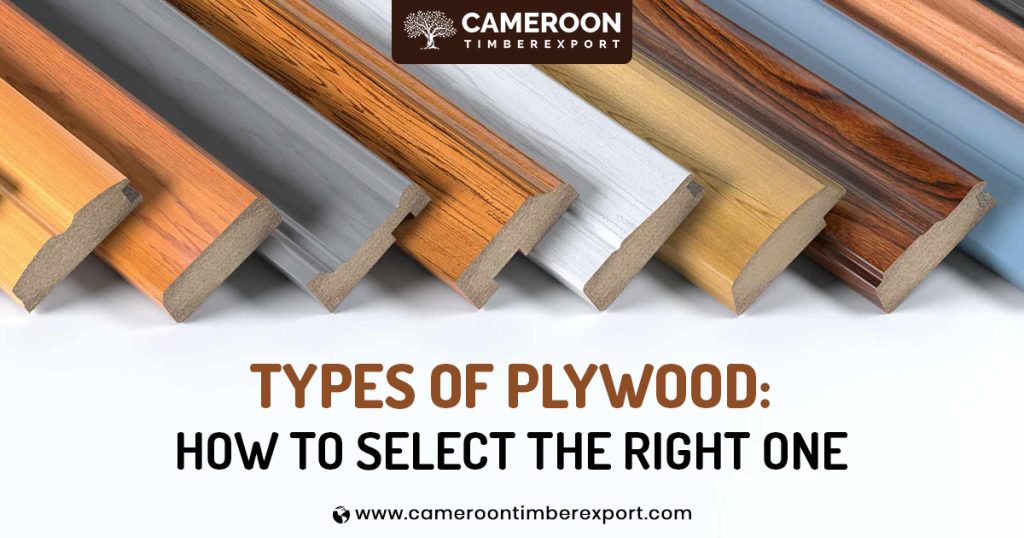Plywood is a type of engineered wood that is used in a vast range of applications, including both DIY and construction projects. Depending on the type and grade of plywood, it can be fairly strong to very strong. In this article, we will talk about the different types of plywood and which is suitable for what purpose.
Why Should You Know About the Types of Plywood?
It comes in many varieties, depending on the material used. Not every type of plywood is suitable for every project. For example, construction projects may require plywoods that are very strong and durable as opposed to DIY projects that might do with low-grade plywoods.
What Is Plywood and Why Is It Used?
Plywood is made by combining thin layers of wood called veneer or plies, which are glued together, generally in a cross-angle pattern, to form a strong, highly durable piece of engineered wood.
It is used as an alternative to solid wood, which is scarcely available these days. It is primarily used in construction because of its high strength and durability. Other uses of plywood include roofing, flooring, panelling, shelving, cabinets, furniture, packaging, boatbuilding & more.
Moreover, it is generally used as an alternative to wood because it can be as strong and durable but is easily available at a much lower cost than solid wood.
5 Types of Plywood
In general, all plywoods out there can be broadly divided into the following five types:
-
Hardwood Plywood
-
Structural Plywood
-
Sanded Plywood
-
Plywood Panels
-
Markerboard
Hardwood plywood is the most common type and is made from hardwoods like oak and birch. It is generally very strong, durable and heavy and is mainly used in the construction of premium furniture and strong load-bearing structures.
Structural plywood, commonly known as plywood sheathing, is made to be used for structures. It comes unfinished and so is used in places where it is hidden from plain view. Examples include framing, flooring, beams, etc.
Sanded plywood is the one that is sanded to make it appear beautiful, as the plywood is mainly used for shelves, panelling, cabinets and other projects where it is visible.
Plywood panels are pre-cut plywood boards that are ready to use in DIY and a variety of other projects.
Markerboard is a piece of plywood that has one side coated such that it can be written upon with dry erase markers. This type is mainly used for crafting and making study boards.
Types of Plywood Based on the Number of Plies
As we mentioned before, plywood is made by combining the thin layers of veneer called plies. The higher number of plies results in a stronger and thicker plywood board. Based on the number of plies, it can have the following types:
-
3-Ply
-
5-Ply
-
Multi-Ply
3-ply plywood is the one that has 3 plies of veneer combined with each other. It is not very thin or thick and is ideal for indoor uses like crafting and decoration.
5-ply is a thicker and stronger type of plywood that involves the use of five plies to form a strong board. It is used both indoors and outdoors for furniture making and other purposes.
Multi-ply is used for more load-sensitive purposes and has seven or more plies in it. It is very strong and thick and is mainly used for structuring, framing and similar purposes.
Grades & Ratings of Plywood
Grades and ratings are the most commonly used factors for choosing the right plywood. Different grades are intended for different uses.
There are five common ratings as follows:
1. Exterior plywood is intended to be used outside, which means the boards are waterproof and can sustain weather conditions.
2. Exposure 1 is the rating given to plywoods that are waterproof but can withstand exposure for a limited period. Not ideal for long-term exposure.
3. Exposure 2 rating is provided to a plywood that is somewhat waterproof and can withstand occasional moisture but should not be constantly exposed to water.
4. Interior plywood refers to panels that are not waterproof and are intended to be used for the interior only.
5. Structure 1 is the plywood designed specifically for seismic retrofit conditions, i.e. created to be resistant to seismic activities such as earthquakes.
Plywood Grades define the quality and appearance of plywoods based on the type of veneers used on the top and the back of the plywood.
A-grade plywood is the highest quality and the most expensive. It has a sanded surface that looks beautiful. It is strong and free of any defects or knots. It is ideal for furniture and other interior uses.
B-grade plywood is also of good quality and has a sanded surface, but it may have minor defects or knots.
C-grade plywood has not been sanded and may have many minor defects. It is used in low-level projects where the appearance of the plywood does not matter.
D-grade is the lowest grade plywood with unfinished surfaces and several minor defects and knots across its length.
There are also available plywoods with mixed grade ratings such as BC. It refers to a panel with one side a B-grade ply and the other side a C-grade ply.
How to Buy the Best Type of Plywood for Your Project?
If you need help selecting the right plywood type or grade for your upcoming project, feel free to contact CameroonTimberExportSARL. We have huge experience in the timber industry and a vast collection of ready-to-use timber and plywoods in a variety of sizes and grades. Call us at +237671776559 to talk to an expert now.

